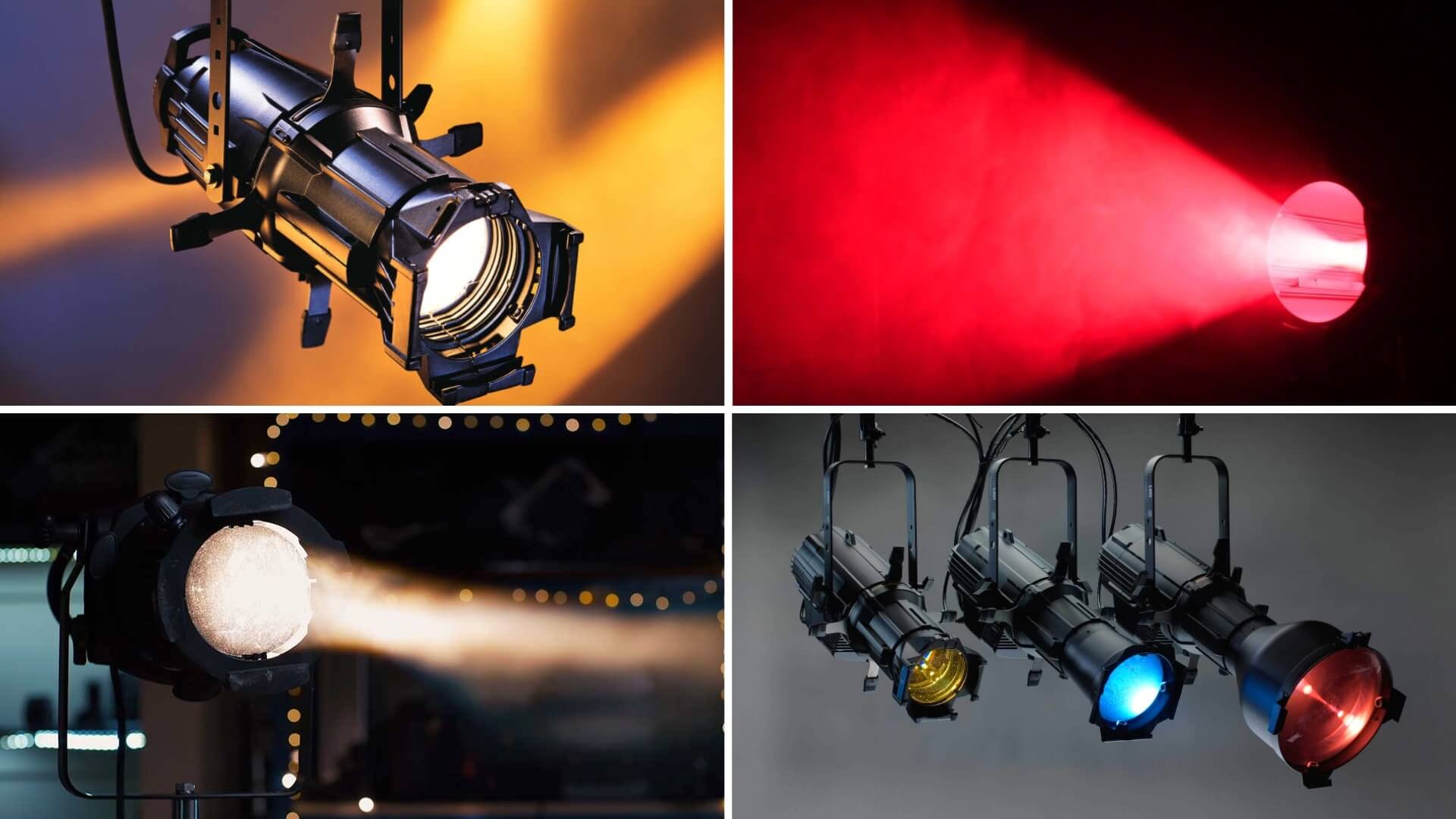Gaffers and Cinematographers know the benefits of the Leko light. Once solely used for lighting up auditoriums and concert venues, these lights can now level up your scenes without spending more than a couple hundred dollars. For those unfamiliar, let’s go deeper. What is a Leko light and how can you use it on set?
Understanding the Leko Light
First, let’s define Leko light
You’re probably already very familiar with this kind of light or at least have seen one before. But what is its main function and how can you repurpose that function to better serve your photos and videos in more creative ways? First, what is it?
Leko Light Definition
What is a Leko light?
A Leko light is an ellipsoidal reflector light used in stage lighting to collect and direct light through a barrel that contains a lens. It is a theatrical spotlight primarily for lighting a stage. But more technically, a Leko light or lekolite as it’s sometimes called, is a powerful light source that focuses the light to a very specific area or small diameter. There are three main components of the leko light: the bulb itself that sits in the back, the blades that shape the light, and the lens in the front where you can focus to a large or small area.
What are ellipsoidal lights used for?
- Stage lighting
- Reach hard to light places
- Change the shape of lighting
From school plays to concerts, we already know what this looks like...
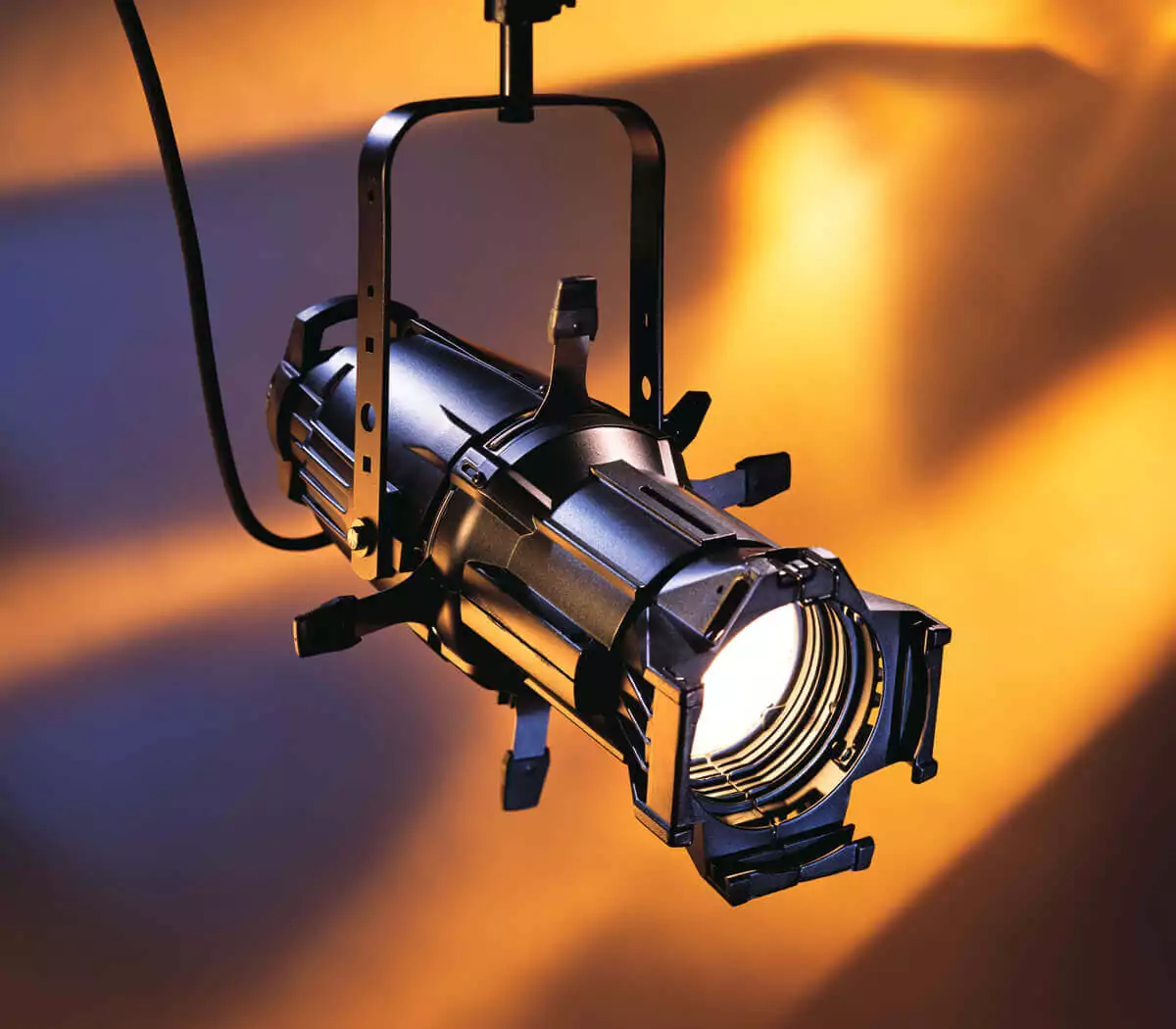
Leko Ellipsoidal Light
These lights are often found in every concert hall or auditorium you’ve ever been in. But what’s going on inside?
Breaking down an ellipsoidal light
Looking into the ellipsoidal light
On the inside, you can see the bulb sits in the back of the fixture, the ellipsoidal reflector and blades in the middle, followed by the lens system in the front.
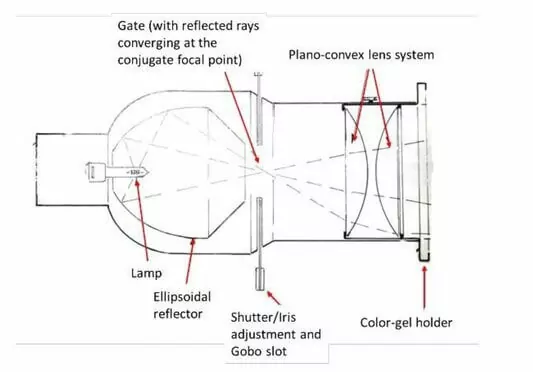
Ellipsoidal Light
Stage Lighting and Precision
Because the Leko light was originally built for stage lighting, it can send powerful beams of light with incredible precision. Naturally, these would be the lights used if you're filming any sort of live performance. But that's just the most obvious application.
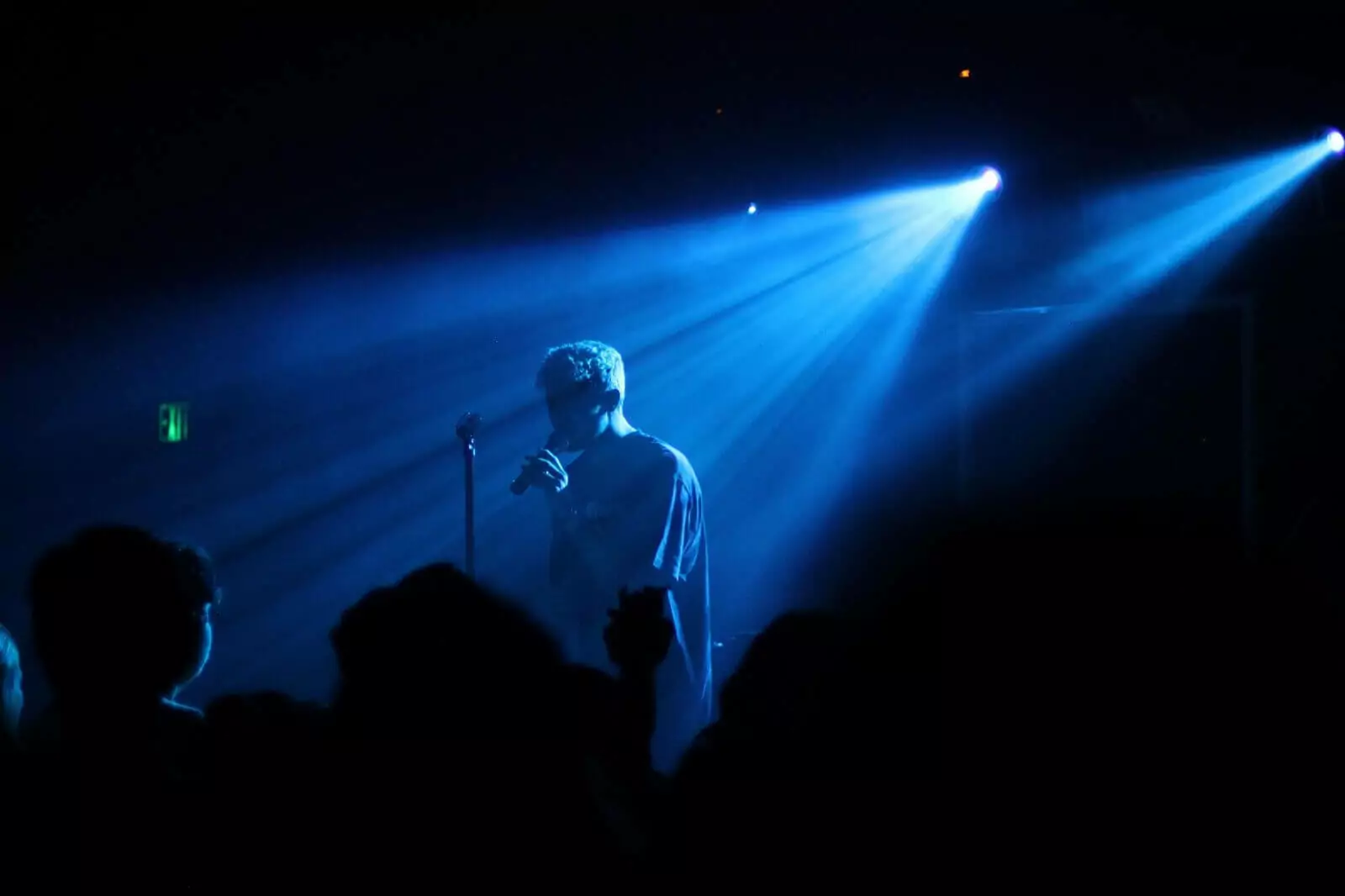
Stage lighting with precision
Types of light
Traditionally, tungsten bulbs were used in spotlights, at about 500 or 750 watts. Because of the color of this light, gels and other plastic covers are often used to match the light to sunlight. However, newer LED Leko lights have been introduced, expanding the functionality so you can now change the color of the light without the use of extra pieces.
Ellipsoidal Reflector Spotlight or “Source Four”
The Electronic Theatre Controls Source Four is a reflector spotlight used globally in professional theaters.

Using source 4 lekos in theatre lighting
Leko Degrees
A Leko lens is measured in degrees. These degrees measure the degree of refraction that determine how wide or narrow the light is dispersed. A 19 degree lens will have a narrow dispersion of light, compared to a 50 degree lens. And theoretically, that 19 degree will be much brighter than the 50.
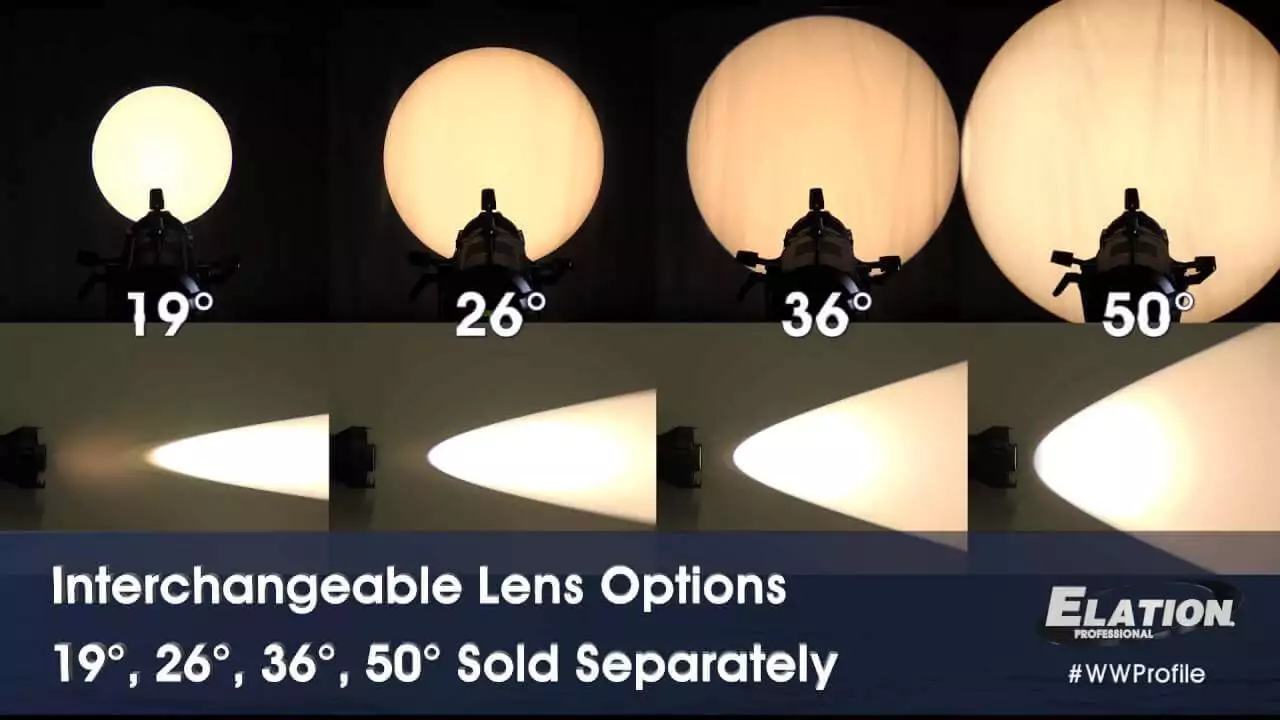
Leko degree lenses
Shape the light
The blades inside can be altered in order to create slices of light or other shapes onto the subject. This is where the specific applications beyond theatrical productions really comes into play.
Here you can see how useful this would be in cinema when trying to capture someone standing behind a curtain or cracked door.
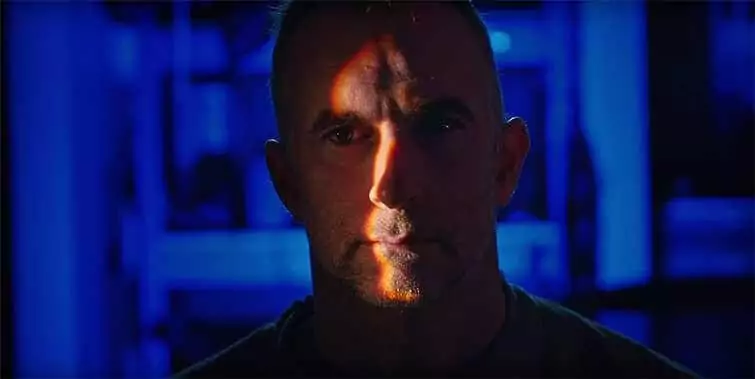
Shaping light with Lekos
Other attachments or accessories like gobos, can be placed inside of the Leko light to create different shapes. Think of Batman’s bat signal.
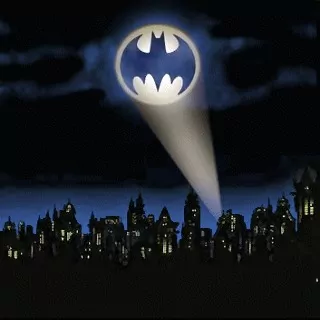
Leko light gobo
And so it’s no surprise just how much the movie industry benefits from the Leko light. While it isn’t used all the time, what it’s used for creates some pretty intentional and powerful scenes.
So how might you use it on set?
Leko Lights on Set
How to use a Leko light
Every gaffer knows to have a Leko light in their tool kit for those interesting situations on set.
Whether you’re using an LED Leko or a light with a tungsten bulb, the power behind a Leko allows you to shoot in those hard to light places. Rubidium Wu shows us how to get the most out of these devices.
How to use Leko Lights
Reach hard-to-light places
Trust the power of the Leko. If you’re unable to get a light into a certain spot, and perhaps there’s no place to run cables or place massive lights, grab a reflector board and tape it to the ceiling or wherever you plan to reflect the light.
You can use the Leko and shine a controlled beam of light into your scene from wherever you are. And the return light you receive will be very controlled.
Controlled light
As mentioned above, shaping and capturing those slices of light can create interesting effects like someone standing behind a curtain or door. Remember, since you’re working with ellipsoidal reflectors, when trying to shape your light, your left blade will adjust the right side of the light, and your right side blade will shape the left.
Try sun hits
One of the best uses of these lights are the little hits of sun you can get to uniquely shape the scene to make it look like the sun is actually coming through. They have the power to make your scene look less artificially lit.
Wear gloves when changing bulbs
Reminder, when you’re replacing the bulbs in your Leko, be sure to wear gloves as they can get really, really hot.
Leko lights are more versatile than you think, and what’s even better, they’re super affordable. A used Leko comes in at a couple hundred bucks. Having one in your arsenal isn’t a bad idea for not only creative effects to boost your narrative, but for practical solutions to common on-set problems.
UP NEXT
Film lighting techniques
Now that we've covered the many ways to use a Leko on your next production, let's talk about some of the lighting techniques you might want to try. With this new gear and some basic lighting techniques under your belt, you're lighting game will be unstoppable.
Up Next: Lighting techniques →
Showcase your vision with elegant shot lists and storyboards.
Create robust and customizable shot lists. Upload images to make storyboards and slideshows.
